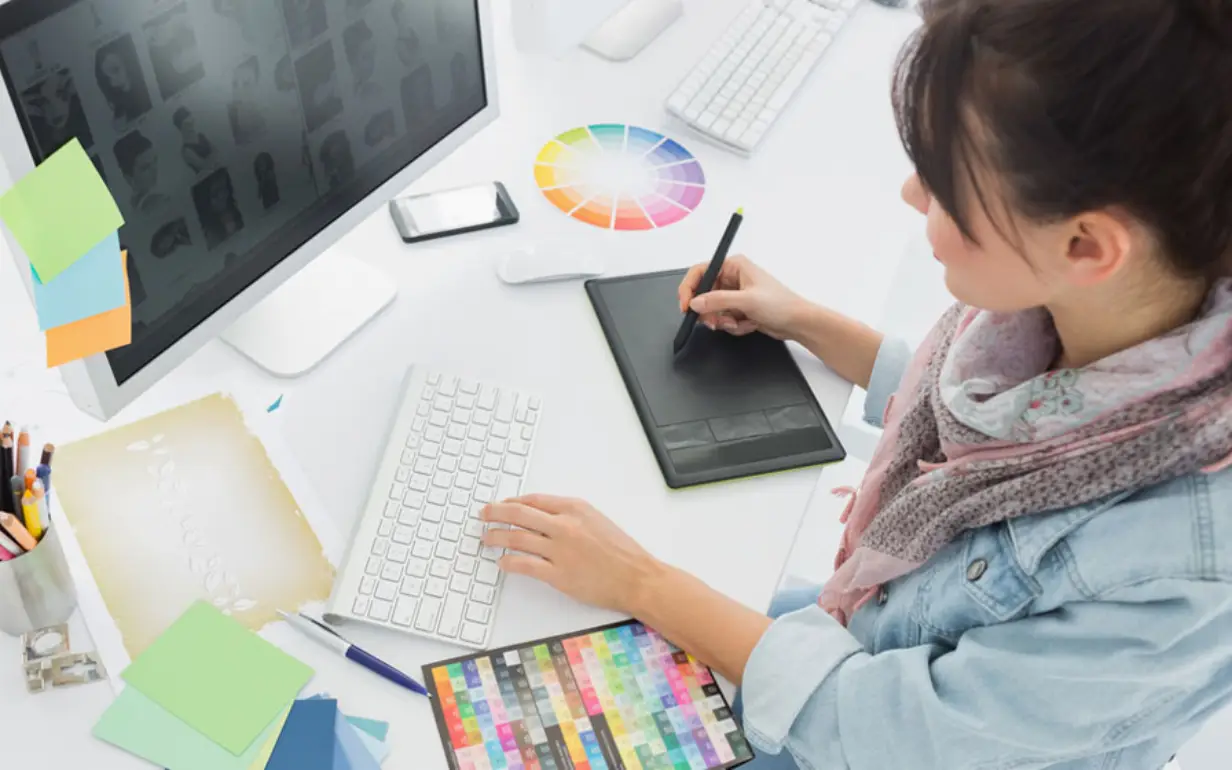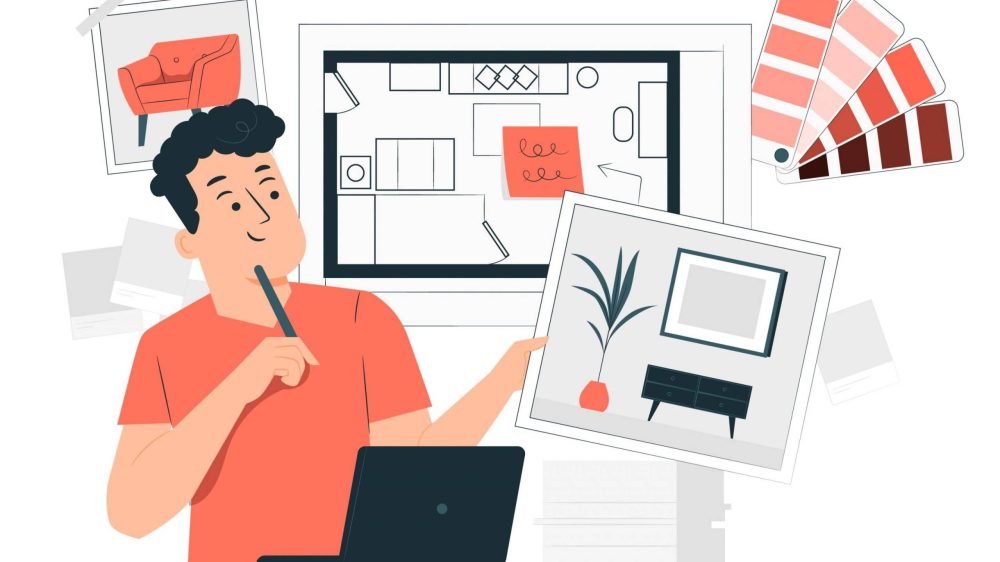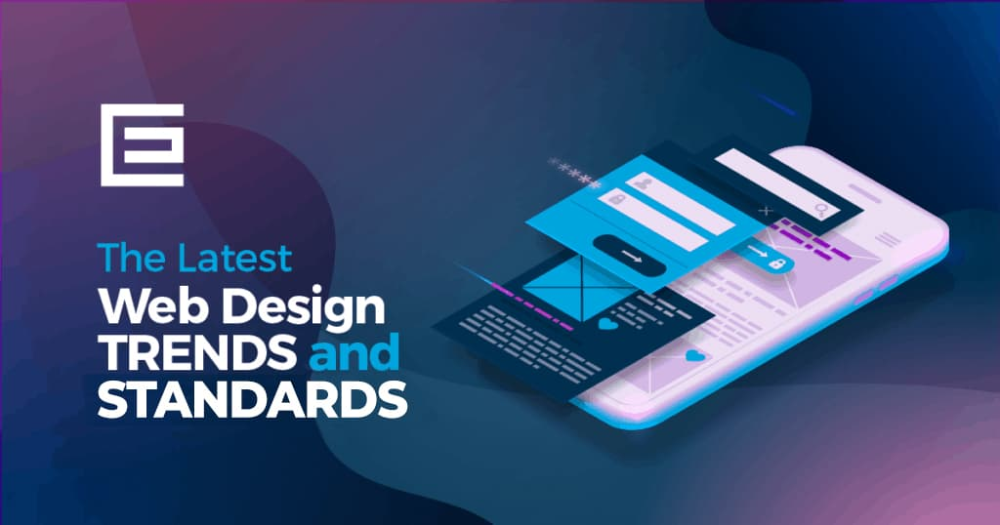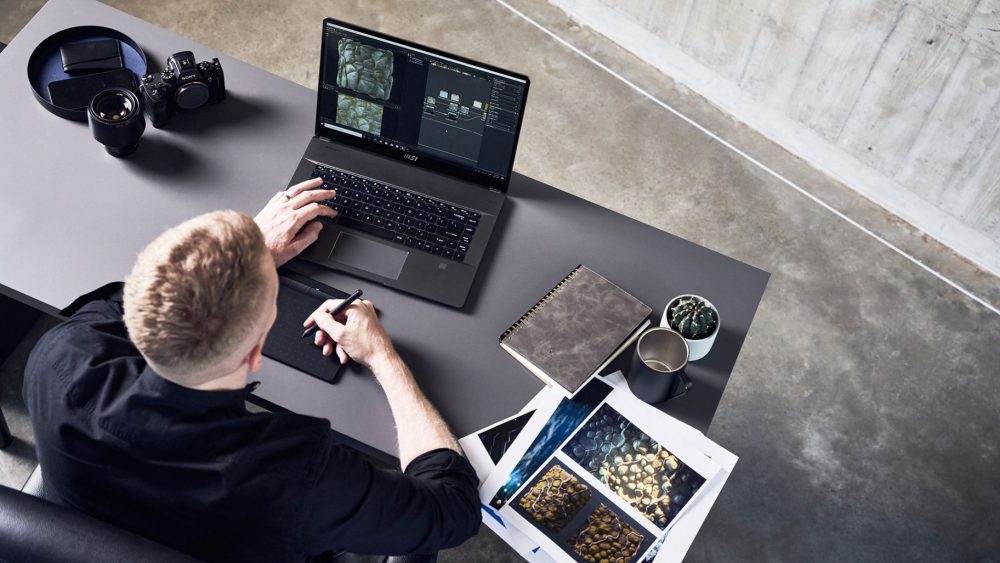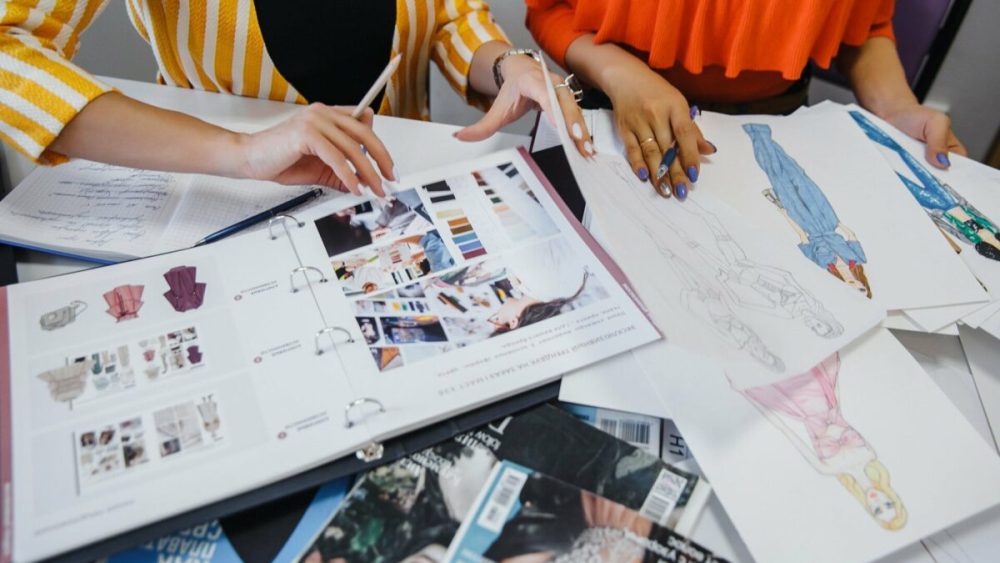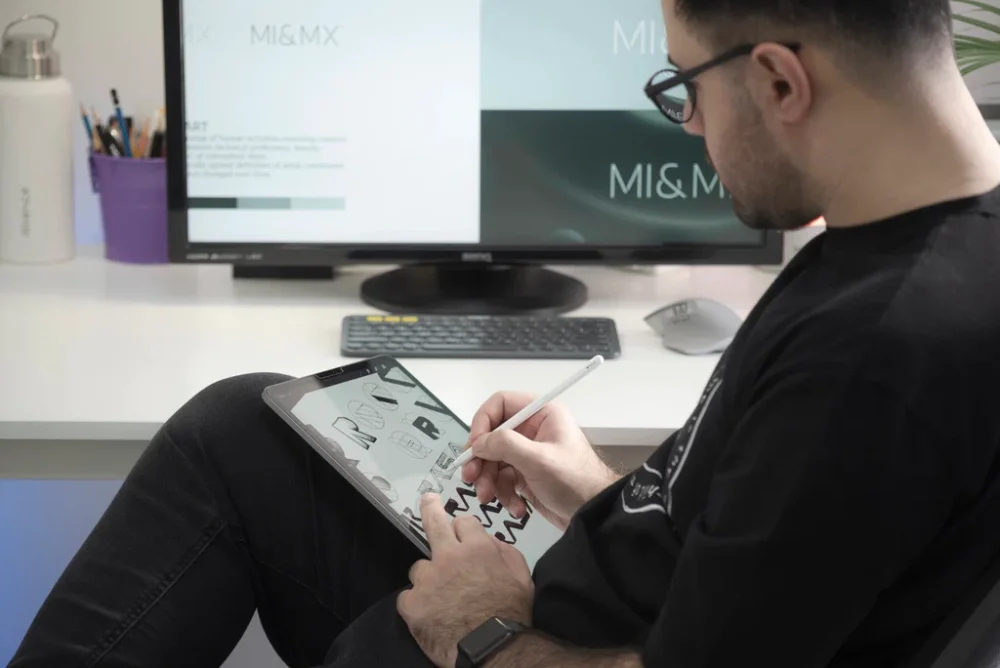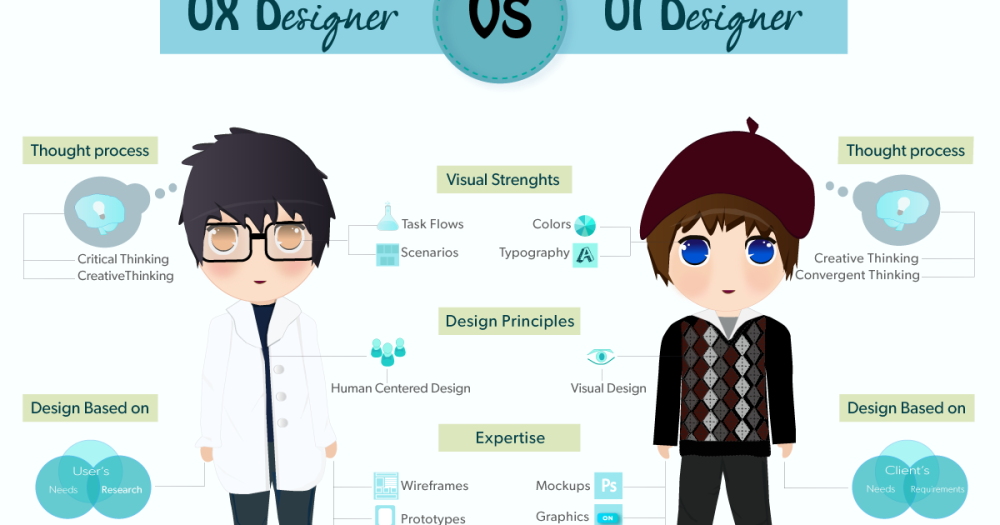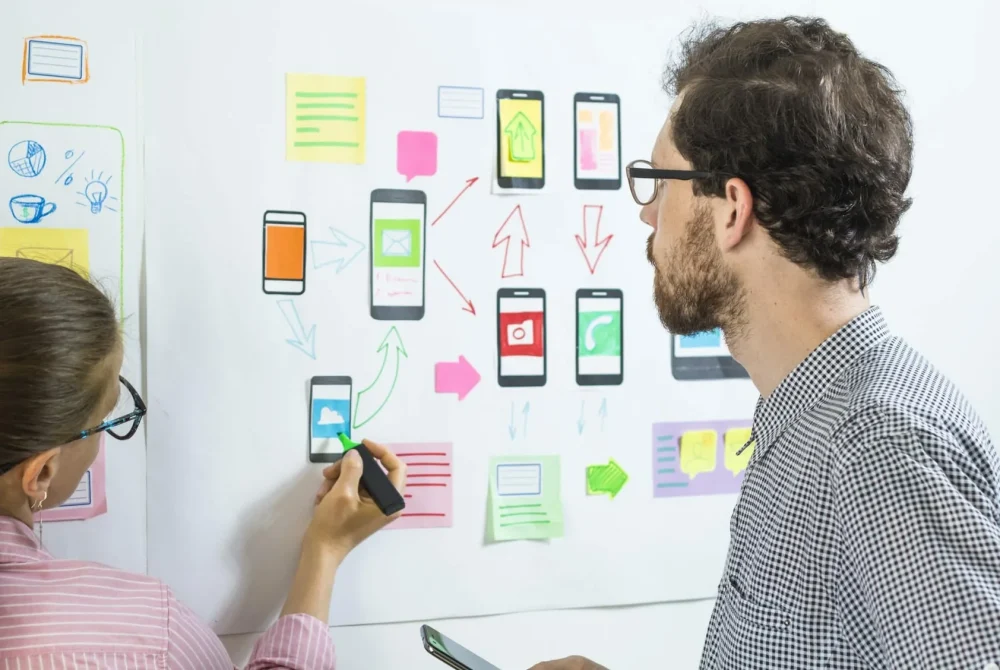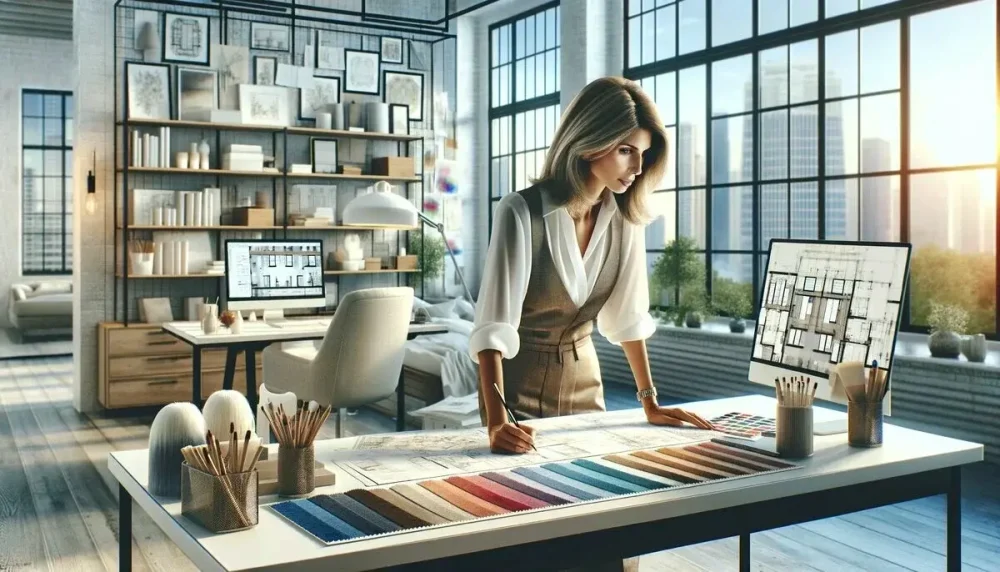More and more people in 2024 are looking for promising remote professions. Working as an online designer is one of them: it opens doors to flexibility, freedom, and new opportunities that just a decade ago seemed like something out of science fiction. It’s no longer about an office chair and a rigid schedule from 9 to 18, but about the ability to choose how each morning will be and where the day will be spent.
Freedom is not only about choosing a location but also about internal independence—creativity knows no bounds when there are no office constraints and endless meetings. In this format, you can work from a cafe or right from your cozy living room. The main thing is to meet deadlines and maintain creative productivity.

Remote work for designers: freedom and flexibility
Without an office and a fixed work schedule, flexibility emerges, which helps efficiently distribute tasks. Distance allows avoiding city traffic jams, saving time, and using it for self-improvement, creativity, or simply relaxation.
Changing the environment to increase productivity
Designers performing tasks online often note that the ability to change the surrounding environment (whether it’s moving to another city or just changing the workspace) significantly improves their productivity and contributes to creative work. Moreover, such specialists actively use remote design education to expand their skills, without being tied to one place or educational institution.
Balance between work and personal life
The absence of strict office rules contributes to a better balance. This is not just words—numerous studies show that remote work has a positive impact on the mental health and productivity of employees. After all, no one monitors how long a specialist drinks morning coffee or when exactly they start their work—the important thing is to complete the task with quality and on time.
Where to find orders for online designers: first steps in work
Of course, in 2024, competition in the profession is high. To find a good job as a designer in the online environment, thorough preparation is needed. Let’s consider this moment in more detail.
Creating a quality portfolio
Novices often wonder how to enter the industry and find their first clients. Remote work opens up a multitude of opportunities, especially if you know where to look for orders. One of the first and most obvious steps is to create a quality designer portfolio for freelancing, which will serve as the specialist’s business card.
Using freelance platforms for designers
Sites like Upwork, Freelancer, and the domestic Kwork offer convenient tools for finding orders and creating a profile to showcase your work. This is an excellent start for those who are just beginning their journey and looking for ways to make a name for themselves. A professional portfolio helps stand out among other candidates. This is important: potential clients primarily evaluate visual examples of work.
Networking and participation in communities
Networking is equally important. Creative professionals can find clients through professional communities on social networks, participate in specialized conferences and workshops. A good way for beginners to find their first orders is to start with small projects on freelance exchanges. Working as a designer for beginners involves many challenges, but it is through participation in such online projects that one can build a reputation and gain initial feedback.
How to create a designer portfolio that attracts clients
A powerful tool that opens doors to the best projects and attracts clients. Creating a portfolio requires a careful approach. It is important not only to collect works but also to present them skillfully. Examples should reflect a variety of skills, the ability to adapt to different styles and tasks. Interaction with different types of clients, and a portfolio is the first step in building trust.
Variety of works
Clients want to see that a specialist can handle tasks of varying complexity, whether it’s developing a brand style or creating infographics. The portfolio should include not only major achievements but also small, creative tasks that demonstrate creativity and attention to detail.
Project descriptions
It is worth explaining what tasks the web artist faced, how the work process went, and what results were achieved. This will help potential clients better understand the approach to work and ensure the professionalism of the specialist. Including client reviews also plays an important role and increases trust.
Benefits of working on online platforms for designers
Freelance sites are convenient for representatives of creative professions. Both beginners and experienced specialists use them regularly. There are several reasons for this. Let’s take a closer look.
Access to a global audience
Easy access to clients from around the world allows not limiting oneself to the local market and working with different cultures and approaches. This not only broadens horizons but also enriches professional experience.
Minimal investment to start
All you need is a computer, internet access, and a willingness to develop. Visualizers can immediately access orders of various complexity and cost, providing the opportunity to choose the most interesting projects. Moreover, on freelance platforms, both beginners and experienced specialists can find work, with the latter seeking large and interesting offers.
Freedom to choose projects
For many, freelancing becomes a convenient start, allowing them to work without being tied to a specific employer and choose projects that truly interest them. It’s not just about money; it’s also about the opportunity for development and self-realization because each project in remote work is a new experience and new challenges.
How much does an online designer earn and how to earn more for work
Incomes depend on a multitude of factors—skill level, experience, specialization, and even geographical location. On average, online designers are paid from 30 to 150 thousand rubles per month. Experienced specialists working with international clients can earn significantly more.
It is important to understand that income also depends on the chosen specialization. For example, graphic designers, web designers, and UX/UI specialists can receive different fees depending on the project’s complexity. In Russia, earnings vary, and young artists usually start with lower amounts, gradually increasing their rates as they gain experience and build a quality portfolio.
How to become a successful designer: secrets and tips
Web-based learning has become accessible thanks to numerous online courses, webinars, and platforms that allow for development without leaving home. This is an ideal way for those who strive to become the best in their field without wasting time on commutes and without being tied to one place.
A successful artist is someone who is not afraid of experiments and constantly seeks new approaches. It is worth paying attention to modern trends, keeping track of global projects, and participating in professional communities. It is important to work not only on technique but also to develop soft skills—communicating with clients, managing time, and presenting your work.
Another key factor in success is adaptability. Working as an online designer involves many unexpected situations, whether it’s changing client requirements or new technical tasks. Flexibility and a willingness to learn new things help stay in demand and successful in a rapidly changing market.

Conclusion: why working as an online designer is a path to freedom and self-realization
The ability to independently determine your schedule, choose interesting projects, and develop at a comfortable pace. Yes, for many, this is a path to personal freedom, where each day is filled with creativity and new challenges.
Remote work is not limited to the boundaries of one city or even one country. It is a global world where every idea can be realized and appreciated. With the right approach and a desire to learn, working as an online designer becomes not only a stable source of income but also a way of self-realization, where each project is a step towards personal and professional growth.


